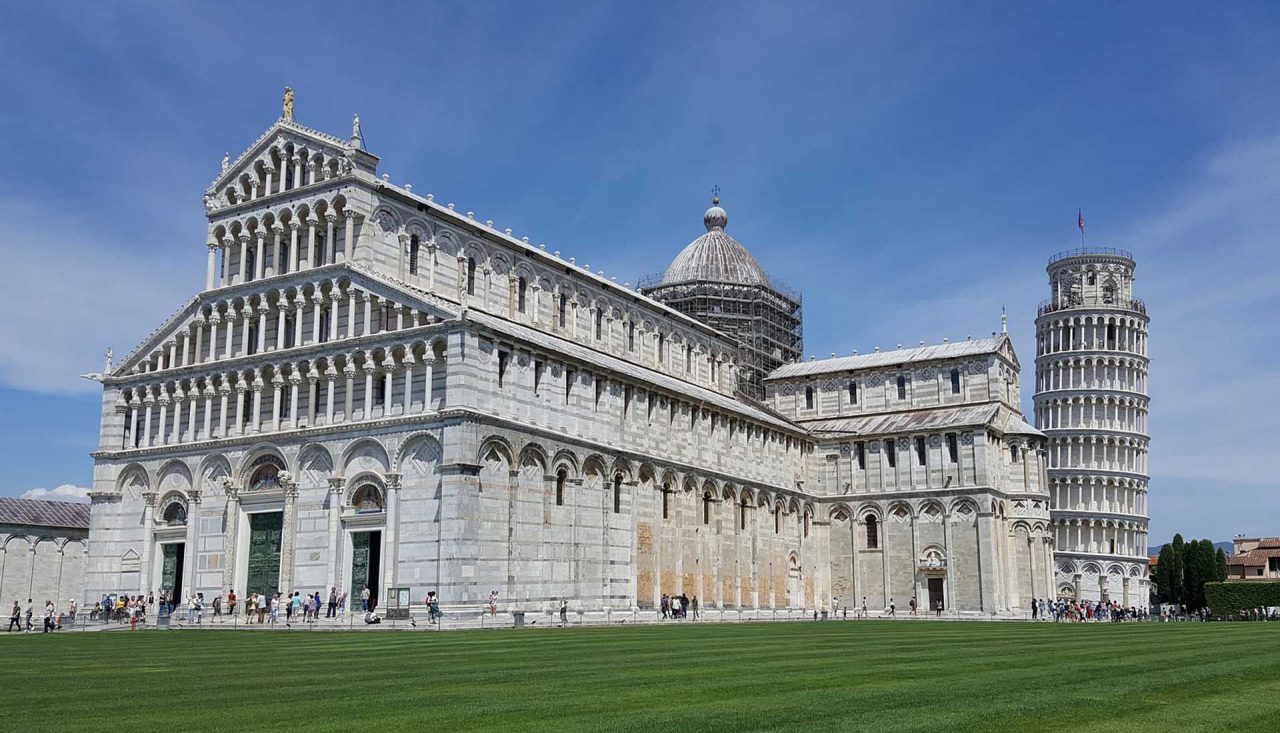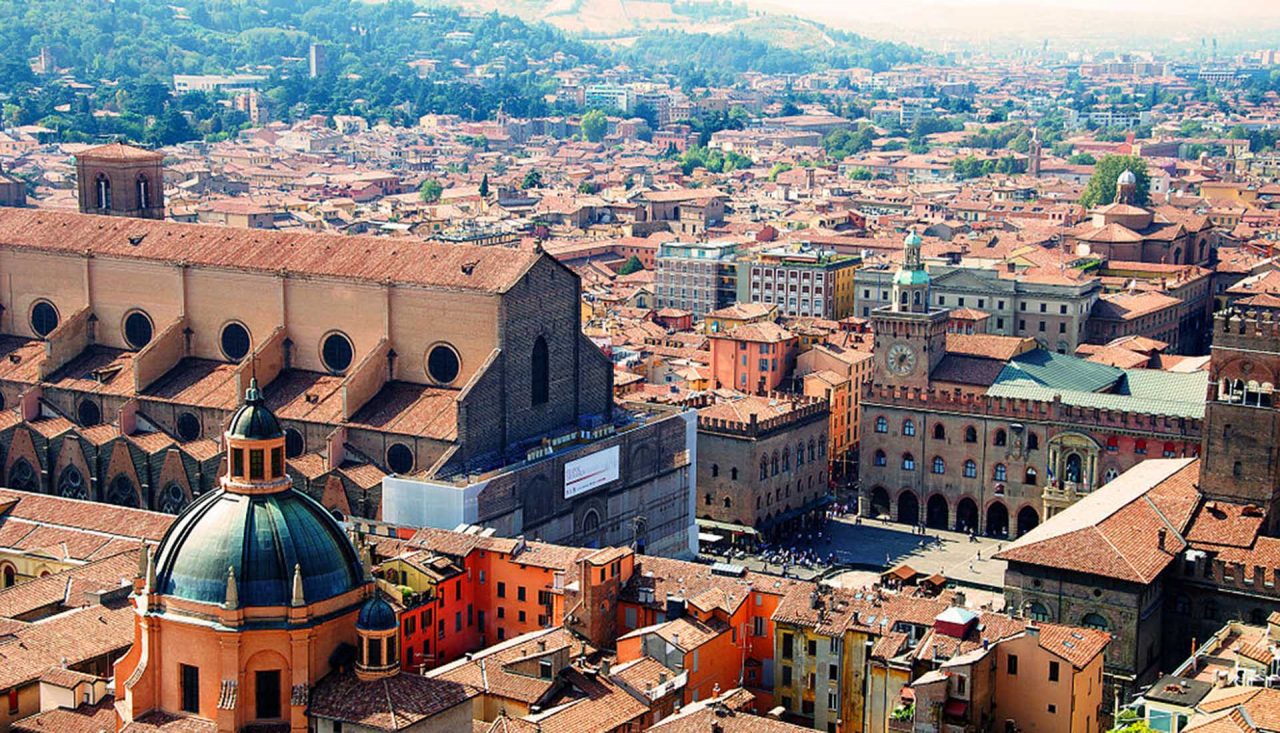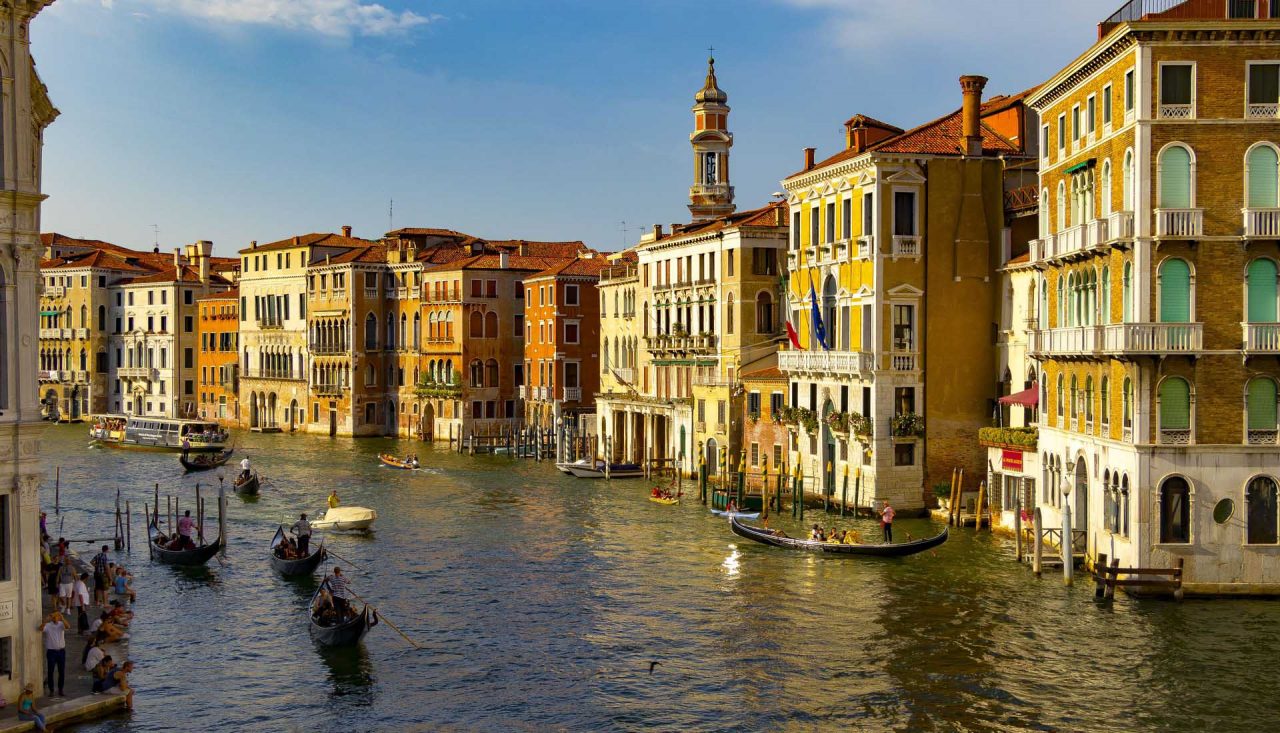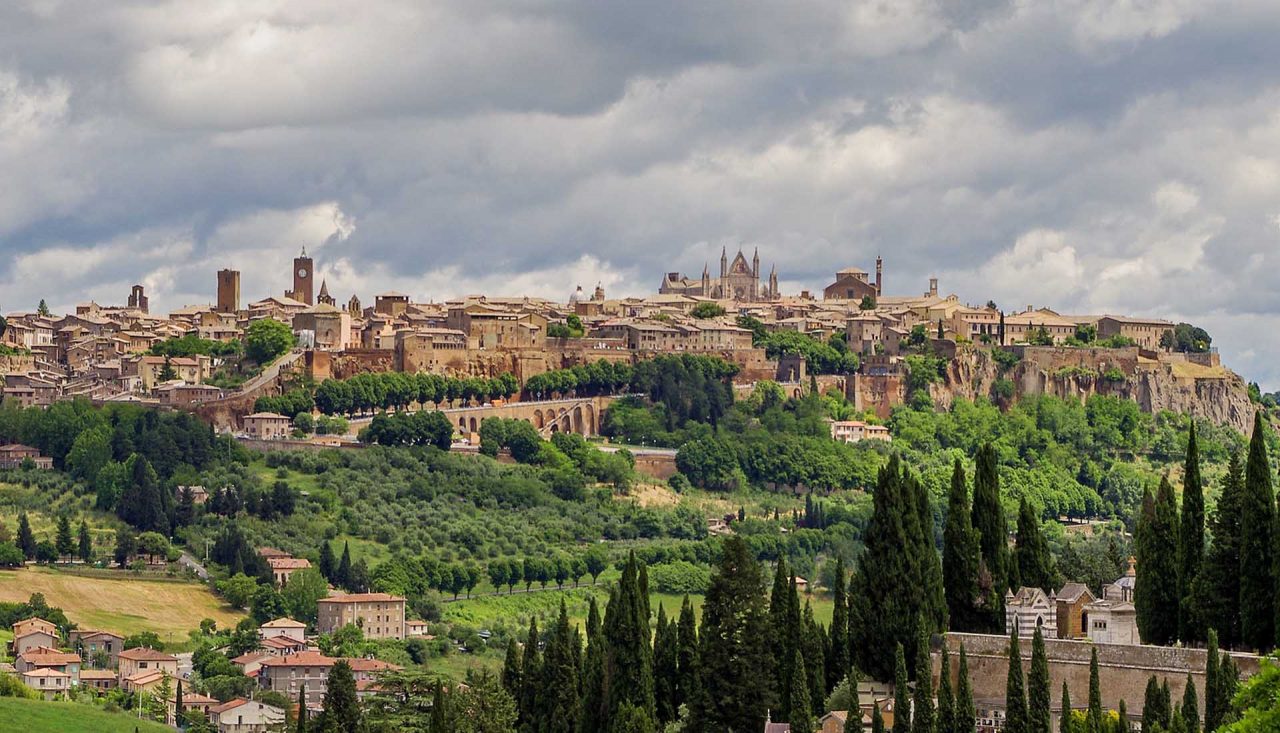Day trips under 90 minutes from Florence by train
This article is sponsored by Trenitalia
Florence is undoubtedly fantastic. But one of our favourite things about the Tuscan capital is how easy it is to take a day trip by train. Within 90 minutes, you could be exploring not only other parts of Tuscany, but regions as different (and stunning) as Emilia-Romagna, Umbria and the Veneto – no car hire needed.
Here are our five top day trips from Florence by train, all bookable on G2Rail.

Lucca: Less than 1.5 hours by train from Florence (Credit: Pixabay)
Day trip #1: Lucca, Italy
Less than 1.5 hours on the Regionale train from Florence, Lucca is one of Italy’s most elegant cities. Wander the cobblestoned streets, admire the Renaissance palazzos and visit the exquisite Duomo, whose beauty rivals even the main cathedral of Florence. Look closely and you can find evidence of Lucca’s ancient history, too: the oval Piazza dell’Anfiteatro gets its shape (and name) from the Roman amphitheatre that once stood here.
If that wasn’t enough, the whole city is encircled by 16th-century walls that – unusually – remain intact today. The fortifications have been turned into a walking and cycling path, making them perfect for a stroll. And music lovers, take note: Lucca also is the home of famous composer Giacomo Puccini (1858–1924).
Pro tip: You easily could spend a whole day in Lucca. But if you want to optimise your time, Lucca is easily combined with a trip to Pisa. Just head from Florence to Lucca in the morning, then take the Regionale train from Lucca to Pisa (30 mins) in the afternoon.

Pisa: Just 50 minutes on the fast train from Florence (Credit: Pixabay)
Day trip #2: Pisa
Pisa is a popular day trip from Florence for good reason. To get your iconic shot in front of the Leaning Tower, direct fast trains (the Frecciargento and Frecciabianca) to Pisa depart from Campo di Marte Station and take just 50 minutes, but operate infrequently (one in the morning/one at night). Rome2rio recommends taking the Regionale train instead, which departs from Florence S.M Novella Station, will save you money and only takes 20 minutes longer.
But while most visitors make a beeline from the train station to the famously sloping monument, we suggest taking some time to explore instead. We love the centre’s pretty, palazzo-lined streets, the Ponte di Mezzo bridge with its views of the city along the Arno River, and the shop-filled arcades in the Borgo Stretto.
End your day at the Piazza dei Miracoli, making sure to visit the 11th-century Duomo and the glorious Baptistery as well as the Leaning Tower.
Pro tip: The later in the day you arrive at the tower, the fewer tourists and coaches there are (and the prettier the light is for photographs, too). Just don’t leave it too late if you want to climb the tower, as it closes in the evenings.

Bologna: 35 minutes from Florence (Credit: Wikimedia Commons)
Day trip #3: Bologna
The region of Emilia-Romagna is known for having some of the best food in Italy. Judge for yourself on one of the easiest, quickest day trips from Florence: the Frecciarossa fast train to Bologna takes just 35 minutes – and can be as affordable as 20 euros when booked in advance. The Emilia-Romagnan capital is the home of delicacies like mortadella di Bologna, tortellini… and of course alla Bolognese sauce (though keep in mind the original has far less tomato than most versions you’ll try outside Italy).
Work off all that food by climbing one of Bologna’s Torre degli Assinelli, one of the city’s 20 remaining medieval towers (originally there were 180). Then wander through the 24 miles (38km) of porticoes. Make sure to stop at the Basilica of San Petronio – still the world’s 10th-largest church, even though work on it stopped back in the 16th century. And if you’re in the mood for something quirky (and creepy), the Museo di Palazzo Poggi has macabre wax statues made to teach anatomy.
Pro tip: If you can linger, stay a bit later in the evening: Bologna is home to Europe’s oldest university, and because of all the students, the city has a fun, relaxed night-life scene. The last train back to Florence leaves just after 10pm.

Venice: Just over 2 hours from Florence by train (Credit: Pixabay)
Day trip #4: Venice
Dying to see Venice, but didn’t have time to make it a separate stop on your trip? No problem. With the Frecciarossa fast train, you can get from Florence to Venice’s central station, Venezia Santa Lucia, in just over 2 hours.
Arrive early to make the most of your day. First, you’ll probably want to see St Mark’s Basilica and the Doge’s Palace, as well as Bridge of Sighs and Rialto Bridge. In the afternoon, explore the island. We especially like wandering around Cannaregio, one of Venice’s most authentic neighbourhoods. Don’t miss the Church of Madonna dell’Orto (home of some of the famed painter Tintoretto’s finest works, as well as his burial place) and the Ca d’Oro (a Venetian palace that gives you a great idea of what life would have been like when Venice was at its peak). Helpfully, Cannaregio also is home to the Santa Lucia train station–which makes it easy to hop on the train back to Florence, too.

Orvieto: 2 hours from Florence by train (Credit: Pixabay)
Day trip #5: Orvieto
Just a 2-hour journey on the Regionale Veloce train, the medieval hilltop town of Orvieto is in the lush region of Umbria, just south of Tuscany. When you arrive, don’t walk up the hill: take the short funicular ride up to the town instead. (Children especially adore this).
Once you’re there, wander the cobblestoned streets and admire the views of Umbria’s rolling hills and vineyards. Don’t miss the Duomo – in particular, the Chapel of the Madonna di San Brizio, where the vivid 15th-century frescoes of the Last Judgment inspired Michelangelo for his work in the Sistine Chapel. Also check out the National Archaeological Museum next door. The museum has an excellent collection of finds from the Etruscans – the ancient people who settled here before the Romans – including paintings, bronze mirrors and sculptures.
Orvieto’s greatest claim to fame, though, is hidden underground. Because this is a volcanic area, Orvieto, like other towns nearby, was built entirely on a soft rock called tuff. From 2500 years ago, the Etruscans and later inhabitants dug tunnels and cellars into the tuff beneath the town.
Pro tip: Explore Orvieto’s hidden underground galleries with a tour that starts from the tourist office just across the piazza from the Duomo.



0 Comments